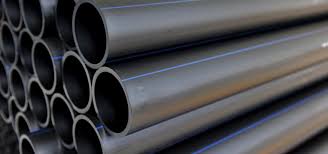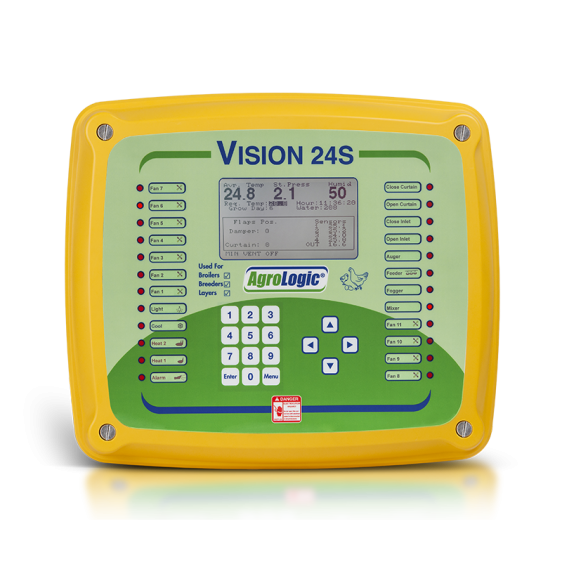Jul . 06, 2025 07:11 Back to list
High-Quality PVC Perforated Pipes for Efficient Drainage Trusted Pipe Manufacturers & Factories
- Introduction to pvc perforated pipes
and their essential role in modern drainage systems - Technical superiority and innovative features of perforated PVC pipes
- Manufacturer and factory comparison: Key performance and industry data
- Tailored solutions provided by leading perforated PVC pipe for drainage manufacturers
- Real-world application cases demonstrating system effectiveness
- Maintenance, lifecycle, and sustainability of perforated PVC pipe systems
- Conclusion highlighting the importance of pvc perforated pipes for drainage

(pvc perforated pipes)
Introduction to pvc perforated pipes: Foundation for Efficient Drainage
In the realm of advanced drainage infrastructure, pvc perforated pipes represent a fundamental technological cornerstone. Their ability to collect and redirect groundwater flows, manage surface run-off, and sustain structural integrity in challenging environments makes them indispensable tools across civil engineering, agriculture, and landscaping industries. Recent market statistics indicate that global demand for perforated PVC pipes has witnessed a compound annual growth rate (CAGR) exceeding 7.8% since 2020, driven by rapid urbanization and growing investments in flood mitigation. Not only does this reflect the increasing reliance on these systems, but it also signals a swift transition from traditional materials — such as clay tile and concrete — towards more efficient, adaptable, and cost-effective PVC-based solutions.
Technical Superiority: Features That Redefine Drainage Innovation
The technical design of perforated PVC pipe for drainage offers a range of superior characteristics that distinctly outpace conventional options. These pipes are engineered with evenly distributed slots or holes, optimizing water collection without compromising structural strength. The chemical resistance inherent to high-grade PVC ensures compatibility with diverse soil conditions, including acidic or alkaline environments, eliminating risks of corrosion observed with metallic alternatives. Furthermore, their lightweight nature reduces the labor and machinery costs associated with installation, while their smooth interior prevents blockages and maximizes hydraulic efficiency. Laboratory tests report an average peak flow efficiency nearly 25% higher than similarly sized concrete pipes, underscoring their exceptional fluid handling capacity. When equipped with geotextile wrappings, these pipes adeptly prevent sediment intrusion while maintaining high infiltration rates, thereby reducing the frequency and severity of downstream maintenance.
Manufacturer and Factory Performance Comparison: Industry Benchmarks
The competitive landscape among perforated pvc pipe for drainage manufacturers and perforated pvc pipe for drainage factories demonstrates considerable diversity in terms of quality, output capacity, and innovation adoption. Below is a comparative data table, evaluated across principal industry metrics (as of 2023), highlighting the performance of leading suppliers worldwide:
| Factory/Manufacturer | Annual Capacity (km) | Material Certification | Slot/Hole Precision (% deviation) | Maximum Pipe Diameter (mm) | Custom Service Availability | Export Ratio (%) |
|---|---|---|---|---|---|---|
| OptiFlow Solutions | 12,000 | ISO 4422, ASTM D1785 | ±0.8% | 630 | Yes | 68 |
| HydraDrain Plastics | 9,700 | EN 1401, NSF | ±1.3% | 400 | Yes | 55 |
| Pioneer PVC Factory | 8,500 | SABS, ISO 9001 | ±1.5% | 500 | Limited | 41 |
| FlowGuard Industries | 15,300 | ISO 4422, WRAS | ±1.0% | 710 | Yes | 72 |
This comparative matrix underscores key differentiators, such as FlowGuard Industries' industry-leading export capacity and the comprehensive certification portfolios maintained by both OptiFlow Solutions and HydraDrain Plastics. Attention to slot/hole precision ensures each manufacturer’s product reliably meets engineering tolerances critical in sensitive drainage systems.
Tailored Drainage Solutions from Global Experts
Recognizing the complexity of modern drainage scenarios, many perforated pvc pipe for drainage factories now provide extensively tailored solutions. These range from adaptive pipe diameters and perforation patterns to pipe colorations and UV-resistant coatings for exposed installations. Customization extends to the incorporation of advanced joining systems — such as gasketed, solvent-weld, or grooved fittings — catering to niche engineering requests and region-specific regulatory requirements. For instance, OptiFlow Solutions has pioneered on-site slotting services, enabling semi-finished pipe lengths to be machine-perforated according to site-specific hydrological data. Such adaptations dramatically enhance system performance in unique geological strata or under fluctuating seasonal rainfall conditions. Typical design consultations incorporate computational fluid dynamics (CFD) simulations, collaboratively aligning pipe specifications with real-world drainage demands, ensuring installations operate efficiently for decades with minimal intervention.
Real-World Case Demonstrations: Performance in Action
The practical efficacy of high-quality perforated PVC pipe systems can be measured through diverse real-world projects. In a recent municipal infrastructure upgrade in southeast Asia, extensive use of 400mm diameter pipes resulted in a 38% reduction in street-level flooding compared to legacy clay-tile installations. Similarly, a commercial agricultural project in the United States observed a 14% increase in crop yield after implementing field-wide perforated PVC sub-surface drainage, directly attributed to improved soil aeration and managed water tables. In high-traffic urban settings, lightweight properties of these pipes expedited installation rates by 22%, significantly reducing project downtime and total costs. Environmental impact studies published in 2022 also reveal that systems utilizing certified recycled-content PVC achieved up to a 30% reduction in embodied carbon versus traditional drainage materials, emphasizing their role in sustainable development strategies.
Maintenance, Lifecycle, and Environmental Considerations of Perforated PVC Pipe Systems
Durable and resilient, perforated PVC pipes typically offer a functional life exceeding 50 years when installed according to manufacturer guidelines. Their smooth-bore interiors minimize sediment accumulation, and most systems are compatible with mechanized pipe-cleaning technologies. Inspections suggest average annual maintenance costs for PVC perforated network are typically 18% lower than those for corrugated metal systems. Moreover, the recyclability of PVC material — with up to 85% recoverable content depending on application — supports responsible end-of-life management. Leading factories have integrated closed-loop recycling into their fabrication process, further reducing environmental impact. Compliance with rigorous international standards (such as ISO 4422 and ASTM D1785) ensures consistent quality and facilitates global adoption. Collectively, these factors highlight why perforated PVC pipe solutions remain the de facto standard for contemporary drainage infrastructure worldwide.
Conclusion: The Lasting Value of pvc perforated pipes for Drainage Systems
The evolution of pvc perforated pipes underscores an ongoing commitment to optimized water management, environmental stewardship, and practical engineering value. By partnering with leading perforated pvc pipe for drainage manufacturers and leveraging customized designs from advanced perforated pvc pipe for drainage factories, project stakeholders can achieve enduring infrastructure and sustainable growth. The proven advantages — from technical excellence and tailored solutions to field-validated success — demonstrate why these pipes remain the strategic backbone of effective drainage systems, empowering urban and rural communities to thrive amidst 21st-century challenges.

(pvc perforated pipes)
FAQS on pvc perforated pipes
Q: What are PVC perforated pipes?
A: PVC perforated pipes are pipes made from polyvinyl chloride with multiple holes or slots along their length. They are mainly used in drainage systems to allow water to flow in or out. These pipes are popular for their durability and lightweight properties.Q: What applications are PVC perforated pipes commonly used for?
A: PVC perforated pipes are commonly used for underground drainage, irrigation, and septic systems. They help in effectively diverting and managing groundwater. Perforated PVC pipe for drainage manufacturers design them specifically for efficient water flow.Q: How do I choose a reliable perforated PVC pipe for drainage manufacturer?
A: Look for manufacturers with certified quality standards, positive customer reviews, and industry experience. Compare products and services among different perforated PVC pipe for drainage factories. Ask for samples or recommendations to ensure product reliability.Q: What sizes of perforated PVC pipes are available from drainage factories?
A: Perforated PVC pipe for drainage factories offer a wide range of sizes, typically from 50mm to 400mm in diameter. The size you need depends on your specific drainage requirements. Always check with the factory for custom size options.Q: Can PVC perforated pipes be used in both residential and commercial projects?
A: Yes, PVC perforated pipes are suitable for both small residential and large commercial drainage systems. Their versatility makes them a preferred choice across various industries. Consult perforated PVC pipe for drainage manufacturers for project-specific advice.-
DN100 PVC Pipes for Well Casings - Durable & Corrosion-Resistant
NewsAug.22,2025
-
HORON 25mm PPR Plumbing Pipes: Durable, Reliable & Leak-Proof
NewsAug.21,2025
-
32mm HDPE Pipes in Coil: Flexible & Durable Water Supply
NewsAug.19,2025
-
Flexible 32mm HDPE Pipes in Coil - Durable & Easy Install
NewsAug.18,2025
-
HDPE Sprinkler Pipe Manufacturers - Quality & Durable Solutions
NewsAug.17,2025
-
Durable DN100 PVC Well Casing Pipes for Reliable Water Supply
NewsAug.16,2025

